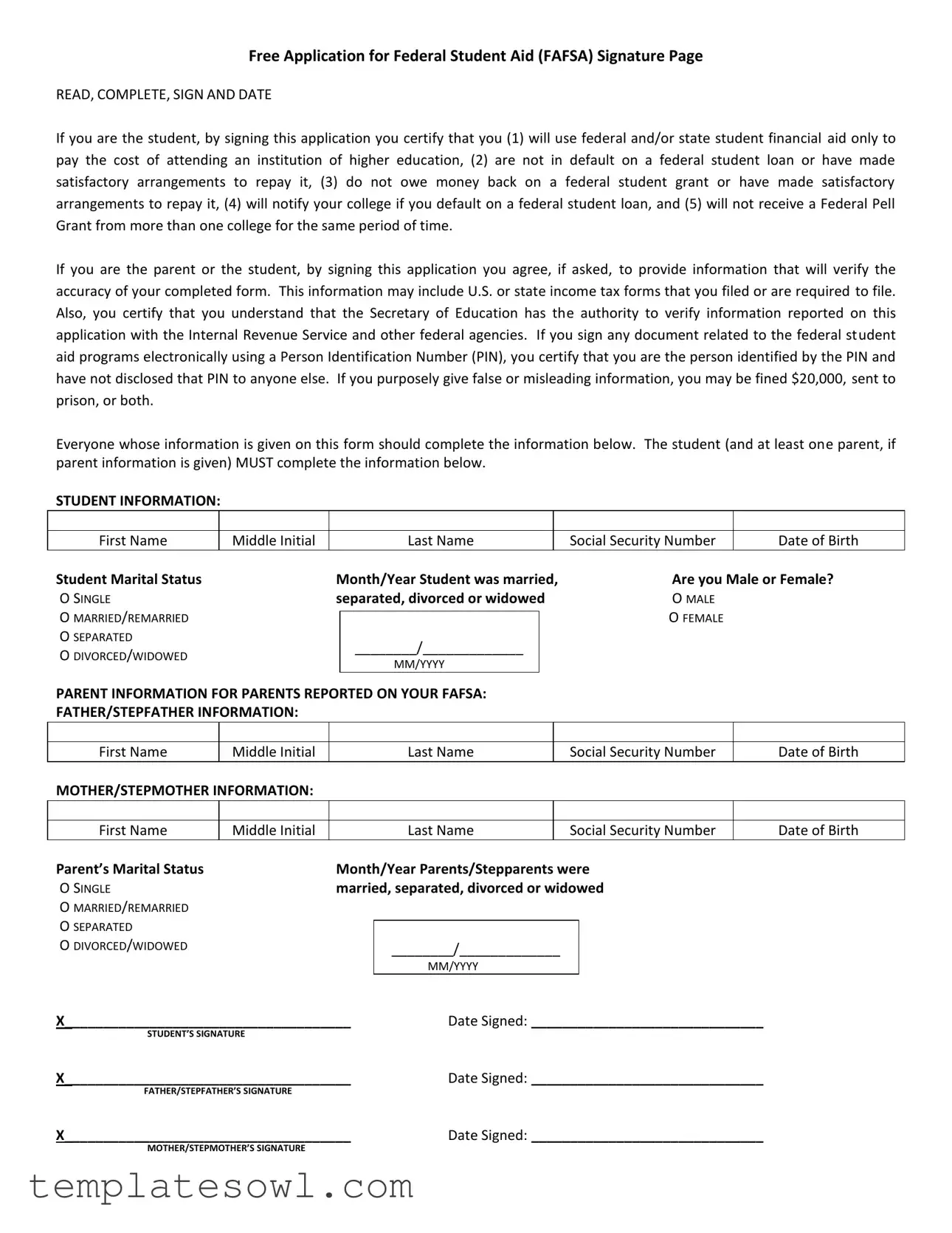What is the FAFSA Signature Page?
The FAFSA Signature Page is a crucial component of the Free Application for Federal Student Aid (FAFSA). It serves as a certification that the information submitted in the FAFSA is accurate and complete. By signing this page, students and their parents agree to abide by the rules for receiving federal and state financial aid.
Why do I need to sign the FAFSA Signature Page?
Your signature on the FAFSA Signature Page confirms your understanding of the terms and conditions of federal student aid. It ensures that you will use the funds solely for educational expenses and that you are not in default on any federal loans. Signing this page is required for your application to be processed and considered for financial aid.
Who needs to sign the FAFSA Signature Page?
The student must sign the FAFSA Signature Page. If parent information is included in the FAFSA, at least one parent or stepparent must also sign. This requirement ensures that both the student and the parent understand and agree to the financial obligations associated with receiving aid.
What happens if I don’t sign the FAFSA Signature Page?
If the FAFSA Signature Page is not signed, your application cannot be processed. This means you may miss out on vital financial aid opportunities that could help cover college costs. It is essential to ensure all necessary signatures are obtained as soon as possible.
Can I submit the FAFSA Signature Page electronically?
Yes, you can submit the FAFSA Signature Page electronically using a Personal Identification Number (PIN). The PIN acts as your signature and verifies your identity. When using a PIN, never share it with anyone else to maintain the integrity of your application.
What if I make a mistake on the FAFSA Signature Page?
If you realize that you’ve made a mistake after signing, do not panic. You can update your FAFSA online at any time. It’s recommended to make corrections as soon as possible to prevent delays in processing your financial aid.
What should I do if I am not eligible to use the FAFSA Signature Page?
If you are not eligible to sign the FAFSA Signature Page, perhaps due to being a dependent student with no parent signature, you may need to provide additional documentation or seek assistance from your school’s financial aid office. They can guide you on alternative options available to you.
How do I know if my FAFSA Signature Page has been received?
What are the penalties for providing false information on the FAFSA Signature Page?
Providing false or misleading information can lead to serious consequences, including fines of up to $20,000, imprisonment, or both. It's critical to ensure all information given on the FAFSA and the Signature Page is accurate to avoid such penalties.

